Functional Nanomaterials
Series of eight lectures delivered by a world-leading chemists dealing with nanochemistry and functional materials. Most of the invited lecturers listed above are ERC grant winners (ERC Advanced Grants, ERC Consolidator Grants and ERC Starting Grants) with top scientific achievements and bibliometric data. The main topic of this series of lectures will concern generation and investigation of functional nanomaterials. This is one of the most up-to-date scientific topics carried out in leading teams around the world. The latter is due to the high application potential nanomaterials that have already been used in many aspects of modern science: from biology, through physics to medicine.
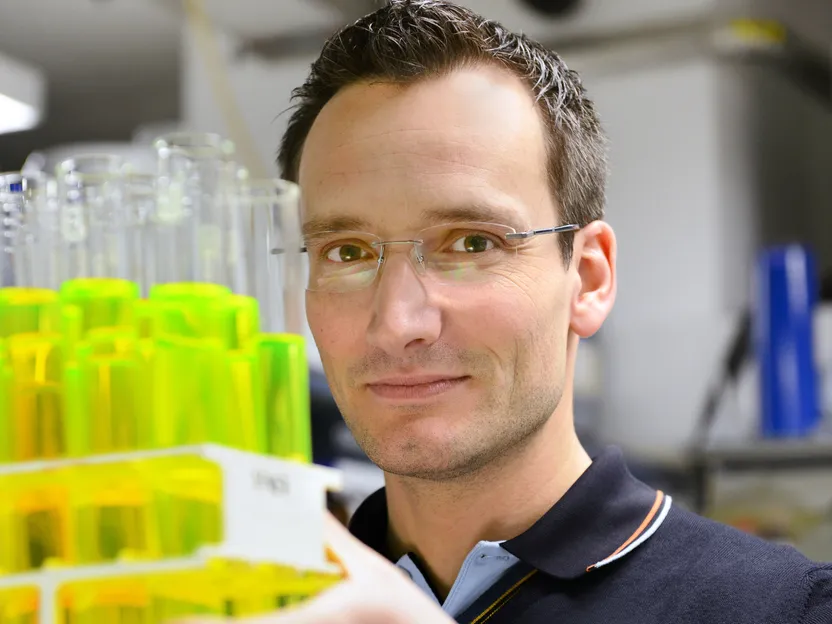 Stefan Hecht heads the Leibniz Institute for Interactive Materials and hold the Chair of Macromolecular Chemistry at RWTH Aachen University. He grew up in Berlin and studied chemistry at Humboldt-Universität from 1992-1997 during which time he performed his Diploma work in the group of Prof. William G. Dauben at the University of California, Berkeley, on photochemical rearrangements. He continued there and carried out his doctoral research with Prof. Jean M. J. Fréchet in the area of highly branched macromolecules. He started his independent research group at Freie Universität Berlin and subsequently the Max Planck Institute for Coal Research in Mülheim/Ruhr before returning to his alma mater in Berlin in 2006. Since the summer of 2019 he holds his current position in Aachen. His research interests range from synthetic macro/supramolecular chemistry to surface science with particular focus on developing photoswitchable molecules to remote-control materials, devices, and manufacturing as well as physical, chemical, and biological processes. Together with Martin Regehly he invented xolography and cofounded xolo GmbH dedicated to commercialize their volumetric 3D printing technology. Since 2018 he serves as an Associate Editor of The Journal of Organic Chemistry.
Stefan Hecht heads the Leibniz Institute for Interactive Materials and hold the Chair of Macromolecular Chemistry at RWTH Aachen University. He grew up in Berlin and studied chemistry at Humboldt-Universität from 1992-1997 during which time he performed his Diploma work in the group of Prof. William G. Dauben at the University of California, Berkeley, on photochemical rearrangements. He continued there and carried out his doctoral research with Prof. Jean M. J. Fréchet in the area of highly branched macromolecules. He started his independent research group at Freie Universität Berlin and subsequently the Max Planck Institute for Coal Research in Mülheim/Ruhr before returning to his alma mater in Berlin in 2006. Since the summer of 2019 he holds his current position in Aachen. His research interests range from synthetic macro/supramolecular chemistry to surface science with particular focus on developing photoswitchable molecules to remote-control materials, devices, and manufacturing as well as physical, chemical, and biological processes. Together with Martin Regehly he invented xolography and cofounded xolo GmbH dedicated to commercialize their volumetric 3D printing technology. Since 2018 he serves as an Associate Editor of The Journal of Organic Chemistry.
Selected papers:
- “Xolography for linear volumetric 3D printing” - Nature 2020, 588, 620;
- "Covalent on-surface polymerization", Nat. Chem. 2020, 12, 115;
- "Optically switchable organic light-emitting transistors", Nat. Nanotechnol. 2019, 14, 347;
- "Light-driven molecular trap enables bidirectional manipulation of dynamic covalent systems", Nat. Chem. 2018, 10, 1031;
- “A photoswitchable catalyst system for remote-controlled (co)polymerization in situ”, Nat. Catal. 2018, 1, 516.
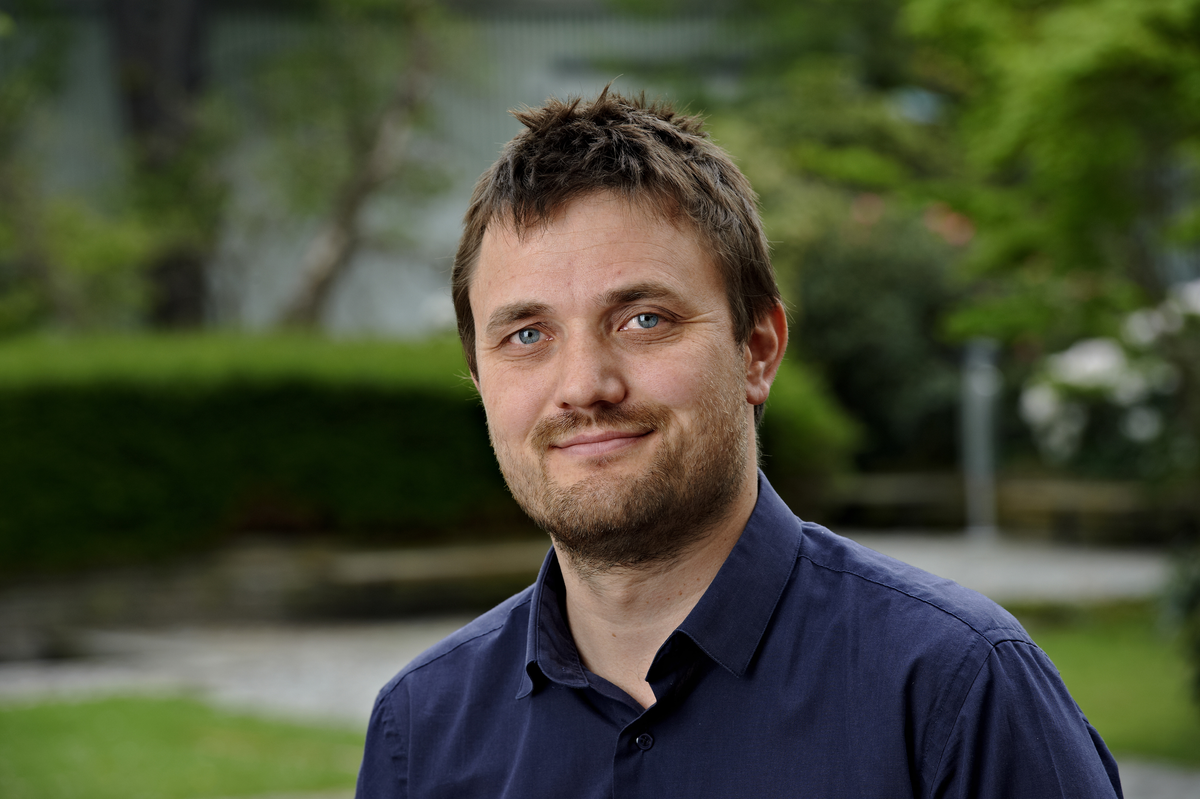 Prof. Michael Pittelkow, Department of Chemistry, University of Copenhagen. Currently works at the Department of Chemistry, University of Copenhagen, as an associate Professor in organic chemistry. He received his PhD degree in 2006 (with Prof. J. B. Christensen) working with the synthesis and properties of dendrimers. During his studies he worked with Bert Meijer in Eindhoven on supramolecular chemistry with dendrimers. He undertook postdoctoral training in the UK working with dynamic combinatorial chemistry (the University of Cambridge with Jeremy Sanders) before moving back to Denmark to start as an adjunkt (assistant professor) at the department of chemistry, University of Copenhagen in November 2008. His research interests include organic synthesis, physical organic chemistry, curved aromatic molecules, anti-aromatic molecules and supramolecular chemistry.
Prof. Michael Pittelkow, Department of Chemistry, University of Copenhagen. Currently works at the Department of Chemistry, University of Copenhagen, as an associate Professor in organic chemistry. He received his PhD degree in 2006 (with Prof. J. B. Christensen) working with the synthesis and properties of dendrimers. During his studies he worked with Bert Meijer in Eindhoven on supramolecular chemistry with dendrimers. He undertook postdoctoral training in the UK working with dynamic combinatorial chemistry (the University of Cambridge with Jeremy Sanders) before moving back to Denmark to start as an adjunkt (assistant professor) at the department of chemistry, University of Copenhagen in November 2008. His research interests include organic synthesis, physical organic chemistry, curved aromatic molecules, anti-aromatic molecules and supramolecular chemistry.
Selected papers:
- K. Pedersen, K. Eriksen, H. Aagren, B. Minaev, N. N. Karaush-Karmazin,O. Hammerich, G. V. Baryshnikov, M. Pittelkow, J. Am. Chem. Soc., 2020, 142, 33, 14058–14063; K. Pedersen, K. Eriksen, N. N. Karaush-Karmazin, B. Mianev, H. Aagren, G. V. Baryshnikov, M. Pittelkow, Angew. Chem. Int. Ed., 2020, 132, 5182-5188;
- M. Yamashina, Y. Tanaka, R. Lavendomme, T. Ronson, M. Pittelkow, J. R. Nitschke, Nature, 2019, 574, 511-515;
- S. K. Pedersen, K. Eriksen, M. Pittelkow, Angew. Chem. Int. Ed., 2019, 58, 51, 18419-18423; K. Farrell, M. Brister, M. Pittelkow, T. I. Soelling, C. Crespo-Hernandez, J. Am. Chem. Soc., 2018, 14, 11214-11218.
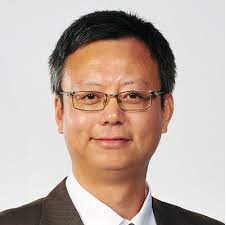 Prof. Hua Zhang is the Herman Hu Chair Professor of Nanomaterials in Department of Chemistry, City University of Hong Kong. He obtained his B.S. and M.S. degrees at Nanjing University in 1992 and 1995, respectively, and completed his Ph.D. with Prof. Zhongfan Liu at Peking University in 1998. He joined Prof. Frans C. De Schryver’s group at Katholieke Universiteit Leuven (KULeuven) as a Research Associate in 1999. Then he moved to Prof. Chad A. Mirkin’s group at Northwestern University as a Postdoctoral Fellow in 2001. He started to work at NanoInk Inc. (USA) as a Research Scientist/Chemist in 2003. After that, he worked as a Senior Research Scientist at Institute of Bioengineering and Nanotechnology (Singapore) in 2005. Then he joined the School of Materials Science and Engineering in Nanyang Technological University (NTU) as an Assistant Professor in 2006. He was promoted to a tenured Associate Professor in 2011, and Full Professor in 2013. In 2019, he joined City University of Hong Kong as a Chair Professor. He has published 6 invited book chapters, 80 patent applications (including granted 1 China patent, 1 European patent, 3 Singapore patents, and 10 US patents), and over 530 papers. As at Feb. 2022, the total cited times are over 97,600 with H-index of 156 (Web of Science), and over 113,600 with H-index of 165 (Google Scholar). He has been invited to give more than 300 Plenary, Keynote or Invited Talks in international conferences, universities and institutes. He has organized several tens of international conferences.
Prof. Hua Zhang is the Herman Hu Chair Professor of Nanomaterials in Department of Chemistry, City University of Hong Kong. He obtained his B.S. and M.S. degrees at Nanjing University in 1992 and 1995, respectively, and completed his Ph.D. with Prof. Zhongfan Liu at Peking University in 1998. He joined Prof. Frans C. De Schryver’s group at Katholieke Universiteit Leuven (KULeuven) as a Research Associate in 1999. Then he moved to Prof. Chad A. Mirkin’s group at Northwestern University as a Postdoctoral Fellow in 2001. He started to work at NanoInk Inc. (USA) as a Research Scientist/Chemist in 2003. After that, he worked as a Senior Research Scientist at Institute of Bioengineering and Nanotechnology (Singapore) in 2005. Then he joined the School of Materials Science and Engineering in Nanyang Technological University (NTU) as an Assistant Professor in 2006. He was promoted to a tenured Associate Professor in 2011, and Full Professor in 2013. In 2019, he joined City University of Hong Kong as a Chair Professor. He has published 6 invited book chapters, 80 patent applications (including granted 1 China patent, 1 European patent, 3 Singapore patents, and 10 US patents), and over 530 papers. As at Feb. 2022, the total cited times are over 97,600 with H-index of 156 (Web of Science), and over 113,600 with H-index of 165 (Google Scholar). He has been invited to give more than 300 Plenary, Keynote or Invited Talks in international conferences, universities and institutes. He has organized several tens of international conferences.
 Harry L. Anderson (Professor of Chemistry, University of Oxford, UK) completed his PhD at the University of Cambridge UK with Jeremy K. M. Sanders (thesis title: Model Enzymes Based on Porphyrins), followed by postdoctoral work at ETH Zurich, Switzerland, with François Diederich, on synthetic approaches to new carbon allotropes. He has led an independent research group at the University of Oxford since 1995. His work includes the investigation of porphyrin-based molecular wires, cyclodextrin polyrotaxanes, insulated molecular wires, encapsulated π-systems, template-directed synthesis, multivalent cooperativity, nanorings, polyynes, nonlinear optical chromophores and functional dyes. Two recent highlights from his group were the AFM imaging of C18 (in collaboration with IBM Zurich) and the demonstration that a 12-porphyrin nanoring can exhibit an aromatic Hückel circuit of 4n + 2 = 162 π-electrons in its 6+ oxidation state. Anderson’s research has resulted in over 300 publications (h index 79). He has been awarded the RSC Tilden Prize (2012) and the Izatt-Christensen Award in Macrocyclic and Supramolecular Chemistry (2017). He was elected as a Fellow of the Royal Society of London (FRS) in 2013.
Harry L. Anderson (Professor of Chemistry, University of Oxford, UK) completed his PhD at the University of Cambridge UK with Jeremy K. M. Sanders (thesis title: Model Enzymes Based on Porphyrins), followed by postdoctoral work at ETH Zurich, Switzerland, with François Diederich, on synthetic approaches to new carbon allotropes. He has led an independent research group at the University of Oxford since 1995. His work includes the investigation of porphyrin-based molecular wires, cyclodextrin polyrotaxanes, insulated molecular wires, encapsulated π-systems, template-directed synthesis, multivalent cooperativity, nanorings, polyynes, nonlinear optical chromophores and functional dyes. Two recent highlights from his group were the AFM imaging of C18 (in collaboration with IBM Zurich) and the demonstration that a 12-porphyrin nanoring can exhibit an aromatic Hückel circuit of 4n + 2 = 162 π-electrons in its 6+ oxidation state. Anderson’s research has resulted in over 300 publications (h index 79). He has been awarded the RSC Tilden Prize (2012) and the Izatt-Christensen Award in Macrocyclic and Supramolecular Chemistry (2017). He was elected as a Fellow of the Royal Society of London (FRS) in 2013.
Selected papers:
- “Global aromaticity at the nanoscale”, M. Rickhaus, M. Jirasek, L. Tejerina, H. Gotfredsen, M. D. Peeks, R. Haver, H.-W. Jiang, T. D. W. Claridge and H. L. Anderson, Nat. Chem. 2020, 12, 236.
- “An sp-hybridized molecular carbon allotrope, cyclo[18]carbon”, K. Kaiser, L. M. Scriven, F. Schulz, P. Gawel, L. Gross and H. L. Anderson, Science 2019, 365, 1299.
- “Aromatic and antiaromatic ring currents in a molecular nanoring”, M. D. Peeks, T. D. W. Claridge and H. L. Anderson, Nature 2017, 541, 200.
- “Polyyne rotaxanes: Stabilization by encapsulation”, L. D. Movsisyan, M. Franz, F. Hampel, A. L. Thompson, R. R. Tykwinski and H. L. Anderson, J. Am. Chem. Soc. 2016, 138, 1366.
- “Vernier templating and synthesis of a 12-porphyrin nano-ring”, M. C. O'Sullivan, J. K. Sprafke, D. V. Kondratuk, C. Rinfray, T. D. W. Claridge, A. Saywell, M. O. Blunt, J. N. O'Shea, P. H. Beton, M. Malfois and H. L. Anderson, Nature 2011, 469, 72.
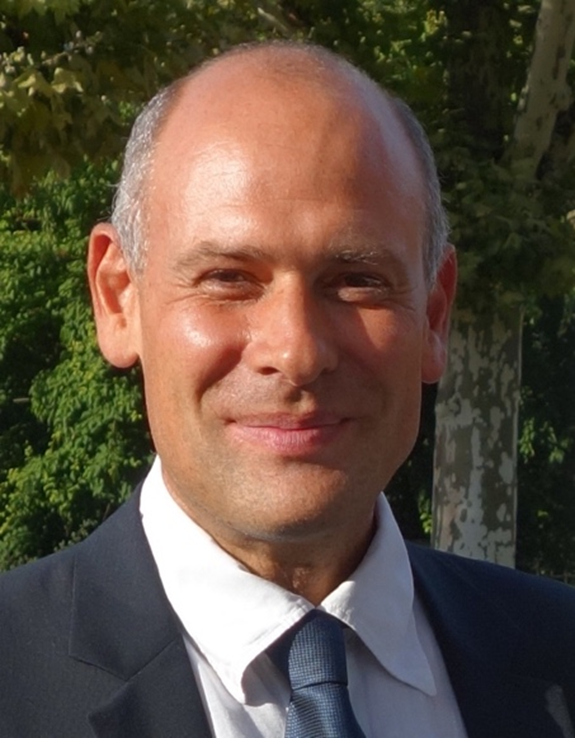 Prof. Paolo Samorì is Distinguished Professor at the Université de Strasbourg, Director of the Institut de Science et d’Ingénierie Supramoléculaires (ISIS) and Director of the Nanochemistry Laboratory. He is Fellow of the Royal Society of Chemistry (FRSC), Fellow of the European Academy of Sciences (EURASC), Member of the Academia Europaea, Foreign Member of the Royal Flemish Academy of Belgium for Science and the Arts (KVAB), Fellow of the Materials Research Society (MRS), Fellow of the University of Strasbourg Institute for Advanced Study (USIAS) and Senior Member of the Institut Universitaire de France (IUF). In 2000, he has received his PhD in Chemistry from the Humboldt University of Berlin (Prof. J. P. Rabe). He has been permanent research scientist at Istituto per la Sintesi Organica e la Fotoreattività of the Consiglio Nazionale delle Ricerche of Bologna from 2001 to 2008 and Visiting Professor at ISIS from 2003 to 2008. He has published >400 papers on nanochemistry, supramolecular sciences, materials chemistry, and scanning probe microscopies with a specific focus on graphene and other 2D materials as well as functional organic/polymeric and hybrid nanomaterials for application in optoelectronics, energy and sensing. He has been awarded numerous prestigious prizes, including the E-MRS Graduate Student Award (1998), the MRS Graduate Student Award (2000), the IUPAC Prize for Young Chemists (2001), the Vincenzo Caglioti Award (2006), the Nicolò Copernico Award (2009), the Guy Ourisson Prize (2010), the ERC Starting Grant (2010), the CNRS Silver Medal (2012), the Catalán-Sabatier Prize (2017), the Grignard-Wittig Lectureship (2017), the ERC Proof of Concept Grant (2017), the RSC Surfaces and Interfaces Award (2018), the Blaise Pascal Medal in Materials Science (2018), the Pierre Süe Prize (2018), the ERC Advanced Grant (2019), the “Étoiles de l’Europe” Prize (2019), the ERC Proof of Concept Grant (2020) and the RSC/SCF Joint Lectureship in Chemical Sciences (2020). He is Associate Editor of Nanoscale and Nanoscale Advances (RSC) and Member of the Advisory Boards of Advanced Materials, Small, ChemNanoMat, ChemPhysChem, ChemPlusChem, ChemSystemsChem and SmartMat (Wiley-VCH), Chemical Society Reviews, Nanoscale Horizons, Chemical Communications and Journal of Materials Chemistry (RSC), ACS Nano and ACS Omega (ACS), and BMC Materials (Springer Nature).
Prof. Paolo Samorì is Distinguished Professor at the Université de Strasbourg, Director of the Institut de Science et d’Ingénierie Supramoléculaires (ISIS) and Director of the Nanochemistry Laboratory. He is Fellow of the Royal Society of Chemistry (FRSC), Fellow of the European Academy of Sciences (EURASC), Member of the Academia Europaea, Foreign Member of the Royal Flemish Academy of Belgium for Science and the Arts (KVAB), Fellow of the Materials Research Society (MRS), Fellow of the University of Strasbourg Institute for Advanced Study (USIAS) and Senior Member of the Institut Universitaire de France (IUF). In 2000, he has received his PhD in Chemistry from the Humboldt University of Berlin (Prof. J. P. Rabe). He has been permanent research scientist at Istituto per la Sintesi Organica e la Fotoreattività of the Consiglio Nazionale delle Ricerche of Bologna from 2001 to 2008 and Visiting Professor at ISIS from 2003 to 2008. He has published >400 papers on nanochemistry, supramolecular sciences, materials chemistry, and scanning probe microscopies with a specific focus on graphene and other 2D materials as well as functional organic/polymeric and hybrid nanomaterials for application in optoelectronics, energy and sensing. He has been awarded numerous prestigious prizes, including the E-MRS Graduate Student Award (1998), the MRS Graduate Student Award (2000), the IUPAC Prize for Young Chemists (2001), the Vincenzo Caglioti Award (2006), the Nicolò Copernico Award (2009), the Guy Ourisson Prize (2010), the ERC Starting Grant (2010), the CNRS Silver Medal (2012), the Catalán-Sabatier Prize (2017), the Grignard-Wittig Lectureship (2017), the ERC Proof of Concept Grant (2017), the RSC Surfaces and Interfaces Award (2018), the Blaise Pascal Medal in Materials Science (2018), the Pierre Süe Prize (2018), the ERC Advanced Grant (2019), the “Étoiles de l’Europe” Prize (2019), the ERC Proof of Concept Grant (2020) and the RSC/SCF Joint Lectureship in Chemical Sciences (2020). He is Associate Editor of Nanoscale and Nanoscale Advances (RSC) and Member of the Advisory Boards of Advanced Materials, Small, ChemNanoMat, ChemPhysChem, ChemPlusChem, ChemSystemsChem and SmartMat (Wiley-VCH), Chemical Society Reviews, Nanoscale Horizons, Chemical Communications and Journal of Materials Chemistry (RSC), ACS Nano and ACS Omega (ACS), and BMC Materials (Springer Nature).
Selected papers:
- Y. Chen, H. Wang, Y. Yao, Y. Wang, C. Ma, P. Samorì, "Synaptic Plasticity Powering Long Afterglow Organic Light-Emitting Transistors", Adv. Mater. 2021, 33, 2103369.
- S. Ippolito, A.G. Kelly, R. Furlan de Oliveira, M.-A. Stoeckel, D. Iglesias, A. Roy, C. Downing, Z. Bian, L. Lombardi, Y.A. Samad, V. Nicolosi, A.C. Ferrari, J.N. Coleman, P. Samorì, "Covalently interconnected transition metal dichalcogenides networks via defect engineering for high-performance electronic devices", Nat. Nanotech. 2021, 16, 592-598.
- M. Carroli, A. G. Dixon, M. Herder, E. Pavlica, S. Hecht, G. Bratina, E. Orgiu, P. Samorì, "Multiresponsive Nonvolatile Memories Based on Optically Switchable Ferroelectric Organic Field‐Effect Transistors", Adv. Mater., 2021, 33, 2007965
- L. Hou, T. Leydecker, X. Zhang, W. Rekab, M. Herder, C. Cendra, S. Hecht, I. McCulloch, A. Salleo, E. Orgiu, P. Samorì, Engineering optically switchable transistors with improved performance by controlling interactions of diarylethenes in polymer matrices", J. Am. Chem. Soc. 2020 142, 11050–11059
- W. Rekab, T. Leydecker, L. Hou, C. Cendra, M. Herder, S. Hecht, A. Salleo, I. McCulloch, E. Orgiu and P. Samorì, "Phototuning selectively hole and electron transport in optically switchable ambipolar transistors", Adv. Funct. Mater. 2020, 30, 1908944.
- L. Hou, X. Zhang, G. F. Cotella, G. Carnicella, M. Herder, B. M. Schmidt, M. Pätzel, S. Hecht, F. Cacialli, P. Samorì, "Optically switchable organic light-emitting transistors", Nat. Nanotechnol., 2019, 14, 347–353.
- L. Zhang, X. Zhong, E. Pavlica, S. Li, A. Klekachev, G. Bratina, T.W. Ebbesen, E. Orgiu, P. Samorì*, "Vertical-channel Nanomesh Scaffold for Supramolecular Nanowire Photonics", Nat. Nanotech. 2016, 11, 900–906.
- T. Leydecker, M. Herder, E. Pavlica, G. Bratina, S. Hecht, E. Orgiu, P. Samorì*, "Flexible non-volatile optical memory TFT device with an unprecedented number of distinct levels based on an organic bi-component blend", Nat. Nanotech. 2016, 11, 769–775.
- E. Orgiu, N. Crivillers, M. Herder, L. Grubert, M. Pätzel, J. Frisch, E. Pavlica, Duc T. Duong, G. Bratina, A. Salleo, N. Koch, S. Hecht, and P. Samorì,* "Optically switchable transistor via energy level phototuning in a bi-component organic semiconductor", Nat. Chem. 2012, 4, 675-679.
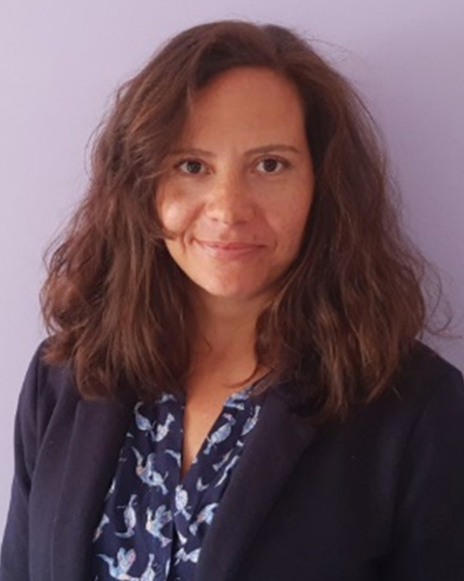 Prof. Silvia Marchesan (University of Trieste, Italy) received her PhD at The University of Edinburgh (UK) under the supervision of Dr. D. Macmillan to work at the interface between organic chemistry and molecular biology on bio-orthogonal modification of proteins for therapeutics. She worked as Honourary Researcher at University College London (2005-2007) and after completing the PhD in 2008 she undertook a position as Academy of Finland postdoc Fellow at The University of Helsinki. There she worked on integrin protein-peptide interactions involved in cell adhesion. In 2010 she moved to Australia as CRSS Fellow in a joint position between Monash University and CSIRO, which is Australia’s national science agency, to work on the development of nanostructured biomaterials. In 2013 she returned to Italy to work at The Centre of Excellence for Nanostructured Materials at The University of Trieste on nanocarbon organic-inorganic composites. In 2015 she was appointed as Assistant Professor at The University of Trieste and secured a highly competitive Starting Grant to set-up her own lab (www.marchesanlab.com). In 2018 she was promoted to Associate Professor and received the National Habilitation as Full Professor in organic chemistry. She is now visiting the University Cambridge, Chemistry Dept. (6 months, 2021-2022). Her research focusses on the development of nanostructured materials and composites with hierarchical organization from the molecular to the macro-scale, with a low-impact on the environment. The two main research lines deal with nanocarbon composites and heterochiral peptide self-assembly, using water as elected solvent for the final systems that find applications form energy to medicine. Her multidisciplinary international profile was selected by Nature Chemistry (2019) amongst those charting the future of the discipline, and by Nature amongst the top-11 Rising Stars in the natural sciences (2018).
Prof. Silvia Marchesan (University of Trieste, Italy) received her PhD at The University of Edinburgh (UK) under the supervision of Dr. D. Macmillan to work at the interface between organic chemistry and molecular biology on bio-orthogonal modification of proteins for therapeutics. She worked as Honourary Researcher at University College London (2005-2007) and after completing the PhD in 2008 she undertook a position as Academy of Finland postdoc Fellow at The University of Helsinki. There she worked on integrin protein-peptide interactions involved in cell adhesion. In 2010 she moved to Australia as CRSS Fellow in a joint position between Monash University and CSIRO, which is Australia’s national science agency, to work on the development of nanostructured biomaterials. In 2013 she returned to Italy to work at The Centre of Excellence for Nanostructured Materials at The University of Trieste on nanocarbon organic-inorganic composites. In 2015 she was appointed as Assistant Professor at The University of Trieste and secured a highly competitive Starting Grant to set-up her own lab (www.marchesanlab.com). In 2018 she was promoted to Associate Professor and received the National Habilitation as Full Professor in organic chemistry. She is now visiting the University Cambridge, Chemistry Dept. (6 months, 2021-2022). Her research focusses on the development of nanostructured materials and composites with hierarchical organization from the molecular to the macro-scale, with a low-impact on the environment. The two main research lines deal with nanocarbon composites and heterochiral peptide self-assembly, using water as elected solvent for the final systems that find applications form energy to medicine. Her multidisciplinary international profile was selected by Nature Chemistry (2019) amongst those charting the future of the discipline, and by Nature amongst the top-11 Rising Stars in the natural sciences (2018).
Selected papers as corresponding author:
- “Nanoscale assembly of functional peptides with divergent programming elements” ACS Nano 2021, 15, 3015.;
- “Heterochirality and Halogenation Control Phe-Phe Hierarchical Assembly” ACS Nano 2020, 14, 16951.
- “Embedding and Positioning of Two FeII4L4 Cages in Supramolecular Tripeptide Gels for Selective Chemical Segregation” Angew. Chem. Int. Ed. 2019, 58, 7982.
- “Chirality effects on peptide self-assembly unraveled from molecules to materials” Chem 2018, 4, 1862;
- “Oxidized nanocarbons-tripeptide supramolecular hydrogels: shape matters!” ACS Nano 2018, 12, 5530;
- “Nanomaterials for stimulating nerve growth” Science 2017, 356, 1010.